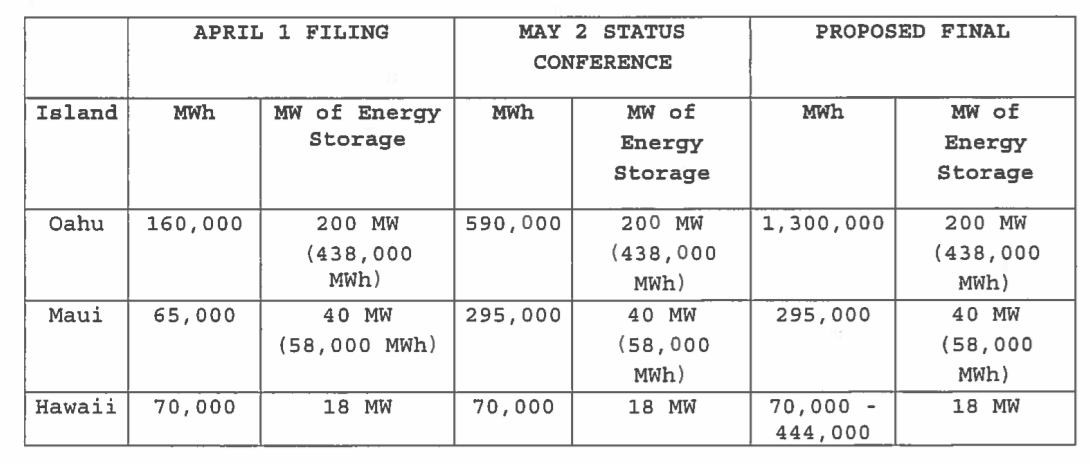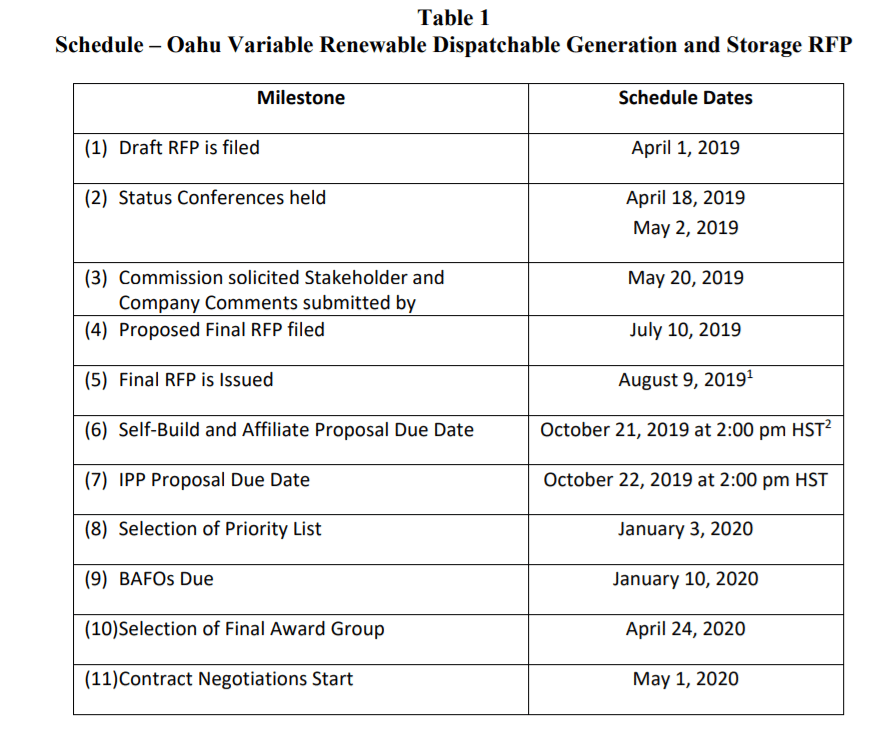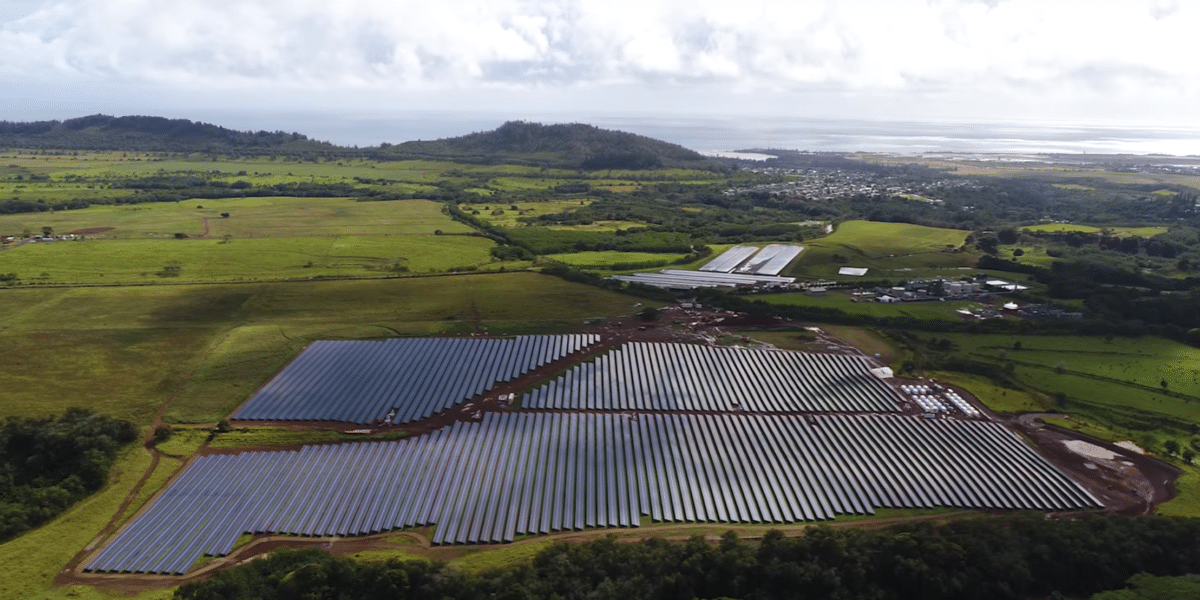The Hawaiian Islands are leaders in research, self experimentation and now procurement of renewable energy. Hawaii was the first state to set a 100% clean electricity mandate, energy and transportation goals, it broke records with utility scale solar plus storage bids under a dime per kWh, and it was the first to implement a solar+storage peaker plant.
Hawaiian Electric Companies (HECO) has released the draft Renewable Request for Proposal (RFP) documents to guide the submission of bids for its recently released Phase 2 energy and grid services procurement (below image). The RFP covers the islands of Oahu, Maui and Hawaii.

The Public Service Commission comments noted a stress on the process due to a power purchase agreement at a fossil plant ending in April of 2022, and how that might affect energy pricing with the tight deadlines to get these projects delivered between mid-2022 and the end of 2025. Specifically to counter this unit shutting down, HECO will be required to bring on 200 MW / 800 MWh of energy storage by June 1, 2022.
The currently proposed application timelines (pdf) (below image for the Oahu RFP) expect that this set of documents will be finalized by August 9, and that the proposals will be due by October 21 and 22 of this year. Selection of priority projects will be presented on January 3 next year, with the final award group in April of 2020 – followed by contract negotiations.

The last page of the document above includes a grid services RFP (volumes in below image) as well, that has a tighter schedule – bids being due on October 15, a short list by Thanksgiving, and then a final award group later in December with negotiations starting just before Christmas. The rules and logic for the Grid Services RFP (pdf) notes that the goal of the procurement is to make use behind the meter resources.

Developers may submit proposals that employ controllable customer loads, energy storage devices, and/or non-fossil generation amongst other technologies.
The real deal document – Draft RFP for Variable Renewable Dispatchable Generation and Energy Storage for Oahu (pdf), is over 1,000 page, notes many of the technicalities – grid connections payment structures, etc – of how the deals will be structured.
For instance, for solar plus storage projects, the package must include the following prices for IPP or Affiliate proposals:
- Lump Sum Payment ($/year)
- Price for Purchase of Electric Energy ($/MWh)
- Black Start ($)
For self build proposals:
- Total Project Capital Costs ($)
- Annual O&M Costs ($/year)
- Annual Revenue Requirement ($/year)
- Black Start ($)
Another detail noted in the Ohau RFP regarding energy storage is,
To maintain the integrity of the transmission system, standalone energy storage Proposals or Proposals coupled with energy storage that intend to meet the needs of the Company’s 438,000 MWh energy storage should either be sited on land near or adjacent to one the following 138 kV substations available (below image) for interconnection.

This content is protected by copyright and may not be reused. If you want to cooperate with us and would like to reuse some of our content, please contact: editors@pv-magazine.com.








Hawaii is near perfect for 100% RE.
The first thing they should do is a bid to convert their diesel generators to waste biomass and they won’t be using FFs generation
any more.
It is a stock option for their diesel generators running gasified biomass. And not like Hawaii doesn’t have waste biomass coming out
their ears.
Next I’d bid some storage but better, more wind as their resource would give 65-75% capacity!!
For solar, most storage, should go to home, building, businesses, EV owners so not take up land and give them lower cost power, even a profit.
Done right and getting rid of useless workers they have power costs there could go from the $.44/kwh they were to a reasonable $.15/kwh or less.
$.05/kwh making their own at home, etc.